Author: Bug
Pixel NFT
The dominators of Bitcoin NFT, avatars made up of small squares seem to be saying: Those who are classic will become eternal.
Recently, in the hot list of BTC NFT track, pixel art NFTs can occupy 5-6 positions out of the top 10 NFTs, easily dominating the market.
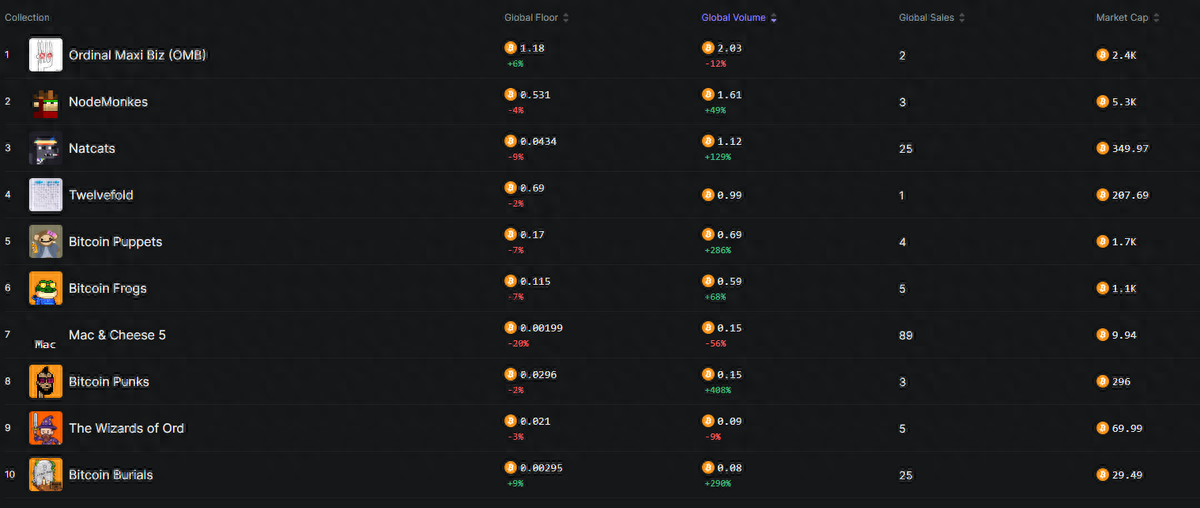 Exchange data from ordinals.market
Exchange data from ordinals.market
In June 2017, Larva Labs launched the pixel art NFT CryptoPunks, which can be considered the origin of NFTs. CryptoPunks issued a total of 10,000 NFTs, each representing a different "punk" pixel art avatar. Numbers 3100 and 7804 were sold for 4200 ETH each on March 11, 2022. Based on the ETH price at that time, the transaction price was approximately $75.66 million. CryptoPunks #5822 was sold in the market in February for a record-breaking price of 8,000 ETH.
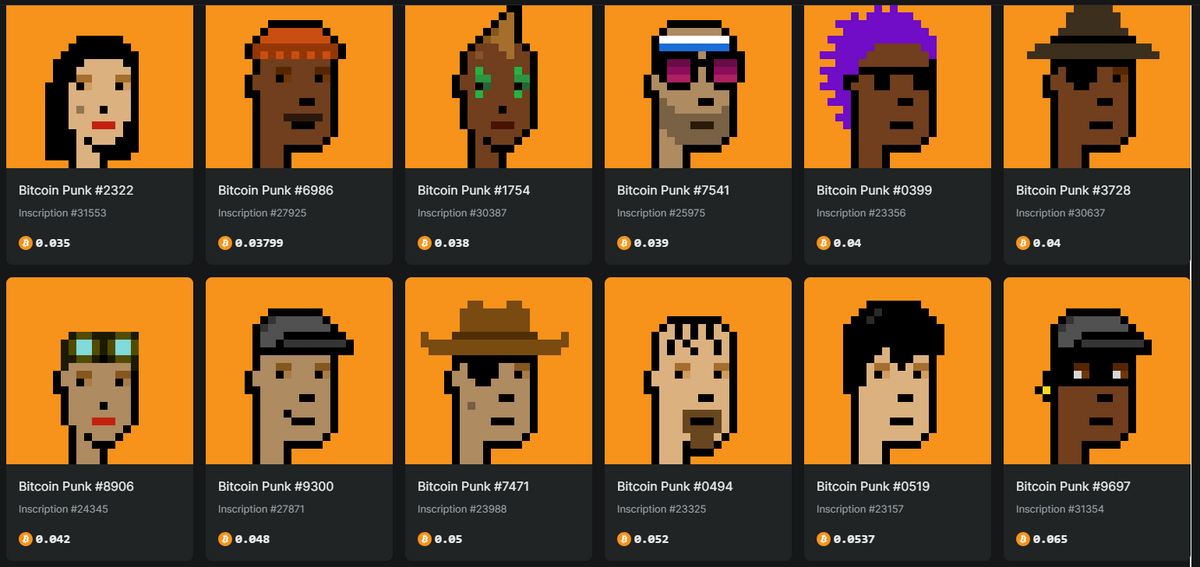
When buying pixel art NFTs, what are users actually buying? Is it the recognition and fascination of the pixel art style in the NFT, or a high appreciation of the artistic value of the NFT market?
That great era is called the Pixel Era.
The Pixel Era I mentioned refers to the first batch of electronic games that appeared in the 1980s, in professional terms, they are 8-bit and 16-bit games. They did not have 3D graphics or true colors, only rough graphics with 64 or 256 colors. However, their appearance was epoch-making and pioneering. "Pac-Man," "Super Mario," and "Contra" are representative games of the pixel art style.
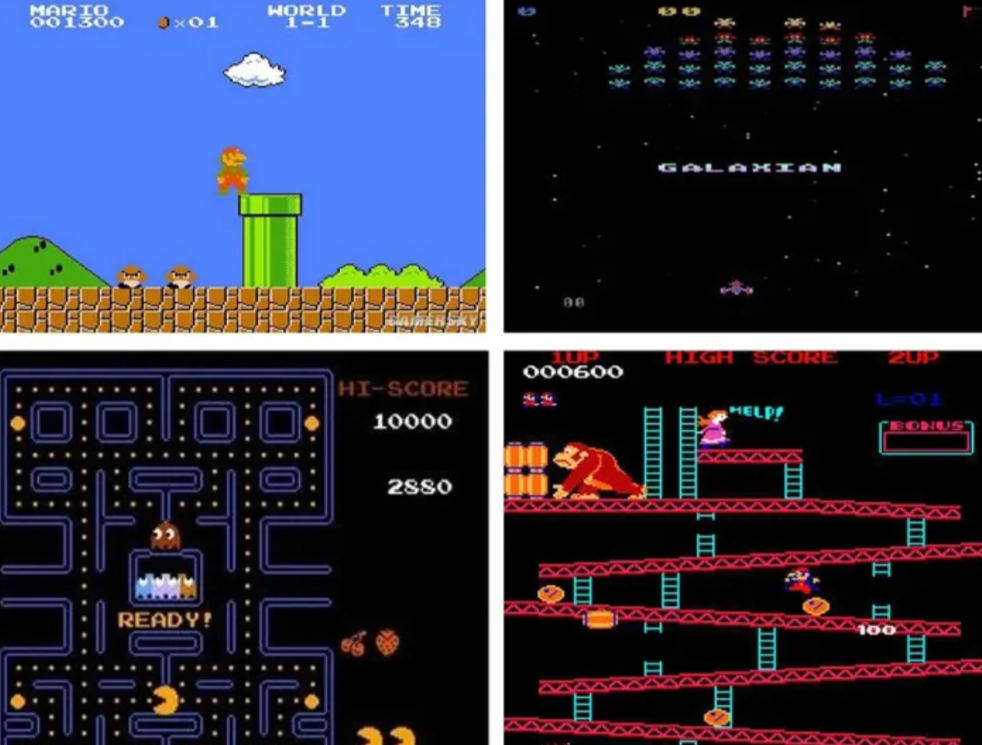
The memories of the pixel era are beautiful yet rough, lacking smooth skin and fading colors. However, they are indeed a part of our generation's life and memories. Despite not being perfect, they embody a more pure attitude towards life and principles of conduct.
In that pixelated era and world, there were not many clues, not many endings, the only thing they had was a determined leap and an unwavering forward…
The nostalgia for this kind of era is popular worldwide, with more and more people yearning to have a collective memory and a sense of continuity in a fragmented world. In the age of Web3 without social interaction, NFTs in wallets are like business cards that open the doors to communities, representing the holder's aesthetics and taste. Pixel art undoubtedly carries the childhood memories of most holders and a group of passionate childhood friends. They would rejoice for a wonderful collaboration, and they would also briefly fall out over the order of gameplay.
Years later, you realize that this kind of friendship is truly precious. They may still be as strong as ever, or they may have been separated for many years, but that simple and joyful feeling still lies deep in your heart, becoming the top topic at gatherings and reunions.
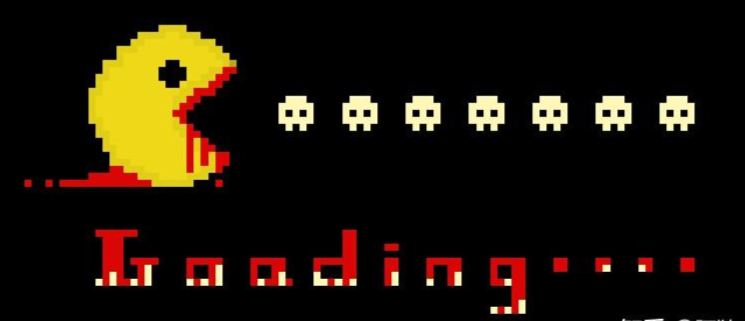
The former hardware limitations have become childhood memories, while the preservation and continuation of pixel art prove that there will always be people who cherish nostalgia. Web3 provides us with a way to cherish memories. For people, owning pixel art NFTs adds various labels to their self-image: peers, cyberpunks, high value, scarcity, etc. This extreme appeal of conversation creates a phenomenon in social interaction, encouraging more people to voluntarily participate.
The limited color choices of early pixel art were due to the RGB color display of electronic game screens, limited to 256 colors. Therefore, game developers usually chose high-saturation main colors, low-saturation transition colors, and shadows. The most common combinations were red-green and blue-yellow, providing players with a strong visual impact and triggering the release of exciting dopamine in the brain. The visual tension of pixel art NFTs can bring users excitement and curiosity, and of course, remind them of the joy of playing games in their childhood.
In the late 1990s, pixel art gradually became synonymous with "rough" and "stiff" in the gaming industry, no longer favored. However, pixel art was not eliminated, but instead became a unique style and cultural symbol. The reason is that pixel art uses simple elements to express thematic content, possessing unlimited creative space and a unique artistic style. Pixel art does not represent information through realistic techniques. On the contrary, the simplicity and clean visual effects of pixel art can effectively reduce visual information overload and improve information transmission efficiency.
Pixel art becomes pixel art because it takes a step back into retro and a step forward into trend. In 2017, Larva Labs' founders Matt Hall and John Watkinson developed a program that could generate thousands of random characters that did not belong to the mainstream aesthetic at the time. Shortly after, Larva Labs released what we now know as CryptoPunks—irregular pixel art image collections. In addition to human images, these pixelated images also include non-human images such as green-skinned zombies, hairy apes, and blue-skinned aliens, all with unique accessories.
The two founders stated that the inspiration for CryptoPunks came from the punk spirit of London: "These images must be a group of non-conformist and non-compliant people. The punk movement in 1970s London feels like the correct aesthetic, and the anti-utopian cyberpunk spirit represented by the movie 'Blade Runner' and William Gibson's novel 'Neuromancer' also had an influence." In their view, the early blockchain movement had a noisy anti-establishment spirit, which they wanted to reflect in the punk appearance.
Some investors believe in the appreciation potential of pixel art NFTs, while some players are addicted to the experience brought by pixel art NFTs. The unique style of NFTs maximizes their social attributes, achieving the goal of word-of-mouth promotion. Marketing consulting firm Vivaldi Partners once divided social currencies into six dimensions: belonging, communication, identity, value, advocacy, and exchange of information and knowledge.
The uniqueness of NFTs allows owners to achieve unique identity recognition. People with similar NFTs quickly form a community, seeking a sense of belonging within the community, advocating for their favorite NFTs, finding common circles, and gaining knowledge and information exchange within them: "I own an NFT, and I also have membership qualifications in the NFT field's OG club."
Grid NFT
From pixel art to grid art, we can call it a clearer upgraded version of pixel art.
When we think of the stars, we think of Van Gogh; when we think of dots, we think of Yayoi Kusama. There is a type of grid that you may not be able to name, but you will definitely be familiar with. That is—Mondrian's primary color grid.
In the minds of many Dutch people, Mondrian's status is on par with Van Gogh's.
In 1918, as World War I was about to end, Mondrian, along with six other artists, signed the "First Manifesto of the Stijl," which opposed war, individualism, and advocated peace.
In Mondrian's world, everything is composed of dots, lines, and blocks of color. His paintings initiated the abstract style, with vertical and horizontal lines dividing, revealing the music and rhythm of the color blocks. Gazing at them, the universal laws of the world seem to make sense in these grids.
This "bewitching" grid, although limited and abstract, symbolizes the primitive forces that make up nature, pure forms, and concise color blocks. The abstract aesthetic concept, from the art world to the fashion world, is full of philosophical thoughts. Different people can find different answers in the grid, which is why this grid is so popular.
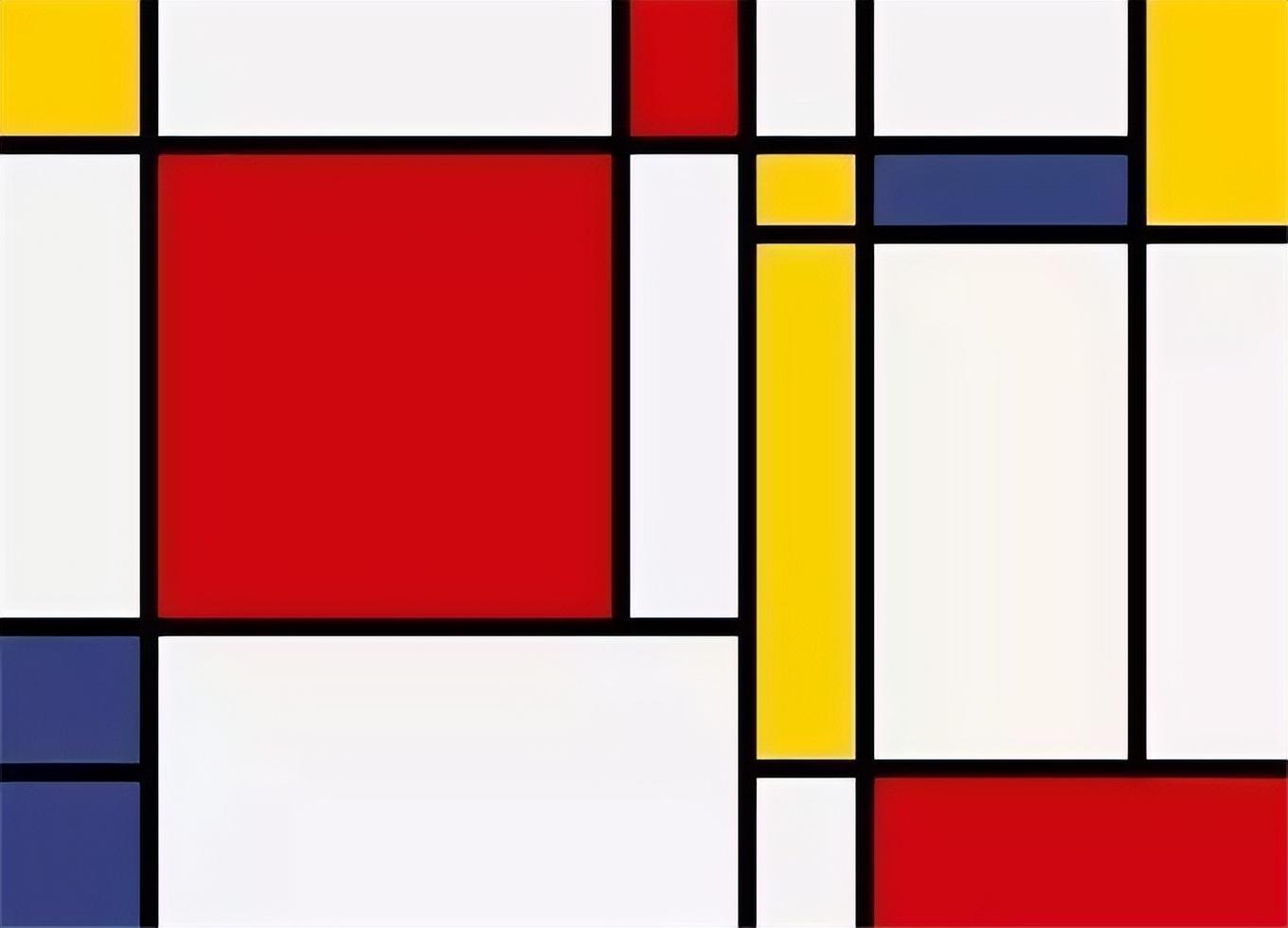
These grids are from the work "Composition with Red, Yellow, and Blue" by the Dutch painter Piet Mondrian.
Just a few grids of art were auctioned for a sky-high price of $50.6 million? Not only that, these grids have become objects that luxury brands around the world are eager to collaborate with? What is the charm of these grids?
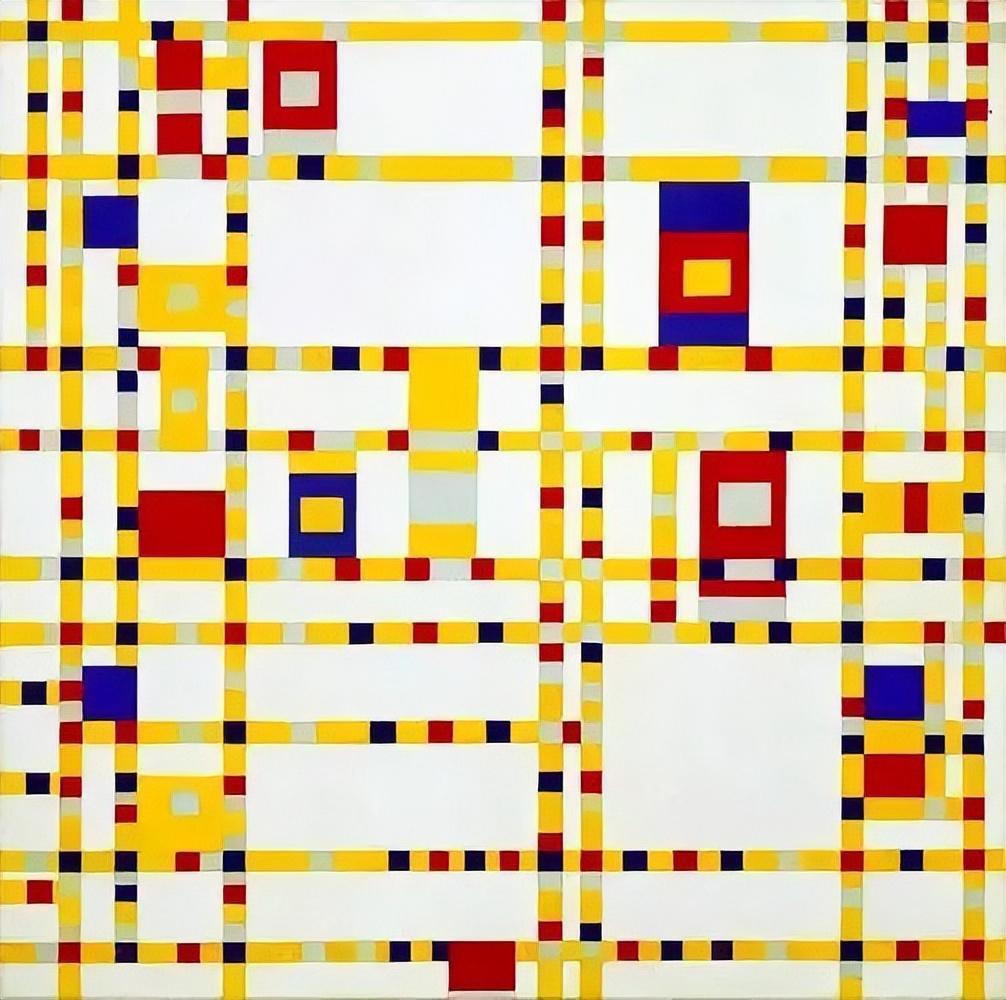
There is also the work "Broadway Boogie Woogie," which is one of the last completed works in his life, and it clearly reflects the new atmosphere of the modern city. Still using straight lines, but not the stern and serious black lines, but lively and colorful lines, composed of small, varying lengths of colored rectangles, dividing and controlling the composition. Still using primary colors, but no longer constrained by black lines, they are dominated by bright yellow and mixed with red and blue to form a colorful line, with red, yellow, and blue blocks scattered among them, creating rhythm changes and frequency vibrations. It looks more cheerful and beautiful than any other work. It is both full of rhythmic jazz and seems to flicker like the unextinguished lights of office buildings and streets under the night sky.
The images of these two works are very simple because he believed that by simplifying shapes and colors, he could express a purer and more universal artistic language. Therefore, his style not only caused a significant shock in the painting world but also had a huge impact on architecture, furniture, decorative arts, and the printing industry at the time. Now, the grid style has come to the Bitcoin NFT field, perhaps representing the nostalgia of the generation born in the 1970s, while the grid NFT may represent the trend pursuit of the new generation of Web3 industry holders.
The Success and Controversy of Grid NFT NodeMonkes
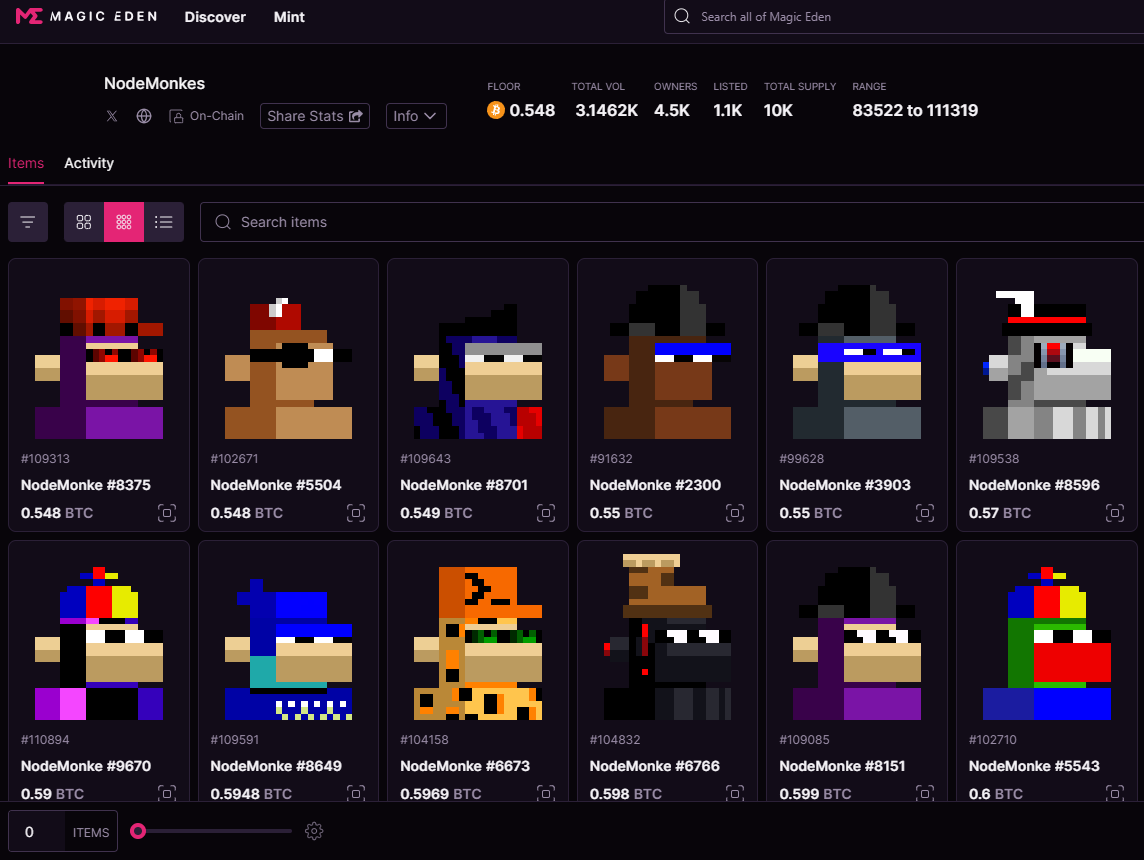
Almost all NFT players are also waiting for NodeMonkes to set a new historical high in Bitcoin terms. As the first Bitcoin NFT series to break through 1 Bitcoin in unit price, NodeMonkes is almost certain to happen, as everyone expects.
From its birth to becoming one of the top 3 NFT projects in the Crypto world by total market value, NodeMonkes only took a little over two months. The floor price of NodeMonkes once reached 0.74 BTC, and its total market value has exceeded $500 million, surpassing Pudgy Penguins and ranking only behind CryptoPunks and BAYC.
Born from Controversy
On December 23, 2023, after about 30 hours of Dutch auctions, NodeMonkes finally sold out when the price dropped to 0.04 Bitcoin, and the project ultimately received sales revenue of about 240 Bitcoin.
NodeMonkes first sparked a huge discussion because it claimed to have rejected a $5 million investment from a VC and insisted on creating a Free Mint project. However, the project's popularity continued to rise, and the project team continued to change the sales plan, abandoning the previous promises. From claiming to be Free Mint and having no whitelist mechanism, to announcing the adoption of a whitelist mechanism and charging for minting, and then to having a Dutch auction with no whitelist, the claimed $5 million investment was also questioned.
Many early Ordinals players were quite dissatisfied with NodeMonkes' repeated flip-flopping during the sales phase—you can certainly make money, but the appearance is a bit too unsightly. Moreover, early Ordinals players have a strong attachment to the "fair," "free," and "sincere" aspects of the Bitcoin ecosystem.

Nevertheless, I believe that the creators of NodeMonkes drew inspiration from Piet Mondrian's work and used various colored grids to create an abstract "boring ape," which is clearer than purely pixelated works. Due to the characteristics of pixel art, the facial details of pixel art NFT characters are blurry, and only the outlines can be seen, while the high-saturation and vibrant colors of the grid style give NFTs a futuristic punk style. The stereotypical impression of low-resolution pixel art has long been discarded, and what players see is the more open interpretive space behind the visual impact. Artists use restrictions and simplifications to depict the scene, convey emotions and thoughts through grids, and oppose works that overly emphasize visual quality but lack substance. Abstraction and symbolism are the common points of pixel art and grid NFTs, as well as the attitudes pursued by Web3 players.
The colored squares in the picture represent the body, earrings, eyes, hats? For example, the eyes are represented by only 2 squares, and the large square below represents the body. Using this method, everything in the work can be represented in right angles. You can always get your answer first. What constitutes the structure of reality is not the objects themselves, but the relationships between them. The so-called structural relationships are created by using abstract vertical and horizontal lines to form simple geometric shapes. The abstract structure of geometric forms pursued by the style is a new and idealistic art form created through the support and combination of lines and surfaces. The grid NFT has created another style of pixel NFT.
What are Curse Inscriptions, and Why Are They Out of Print?
Curse Inscriptions refer to inscriptions not indexed by the Ordinals protocol, initially due to a BUG in the Ordinals protocol, which caused the numbering to start from 0 and count down, resulting in negative numbers, thus defining them as "cursed inscriptions."
The rarity is the biggest feature of Curse Inscriptions. Especially in Web3, NFTs are ranked by their rarity, so there are price differences within the same collection of NFTs, but Curse Inscriptions are more like an unintentional rarity. Therefore, the narrative angle of Curse Inscriptions lies in their scarcity compared to other regular inscriptions.
The out-of-print status of Curse Inscriptions is due to the Ordinals Jubilee upgrade. Casey, the founder of Ordinals, announced that the Jubilee upgrade would take place at block height 824544. After the Jubilee, all inscriptions will be blessed, which means that using batch inscriptions and other functions will no longer result in cursed inscriptions. However, before the Jubilee upgrade, Curse Inscriptions still exist, which is also the reason for the community's FOMO for Curse Inscriptions.
Before the block height 824544 arrives, the Curse Inscriptions projects that are in the process of minting are all working intensively to mint inscriptions, vying to be the last Curse Inscription.
The out-of-print status of Curse Inscriptions may signify a new starting point for the Bitcoin ecosystem. UniSat stated that it will follow the Ordinals Jubilee upgrade to ensure that BRC-20 continues to operate on Ordinals rather than splitting into a separate protocol.
According to the information I found, the last text Curse Inscription is INSCRIPTION-472,043, recording the Yin and Yang Inscription of Mickey Mouse.
The last image Curse Inscription is the Curse Goose of Pizza Cong, INSCRIPTION-472,040.
The last negative (Yin) and positive (Yang) dual-sided engraved Curse Inscription is INSCRIPTION-458,327, the last one of the 10K collection BitMonkes, also engraved on the rare Cong with a cursed blue smoke frame design. BitMonkes only has 150 with a cursed blue frame.
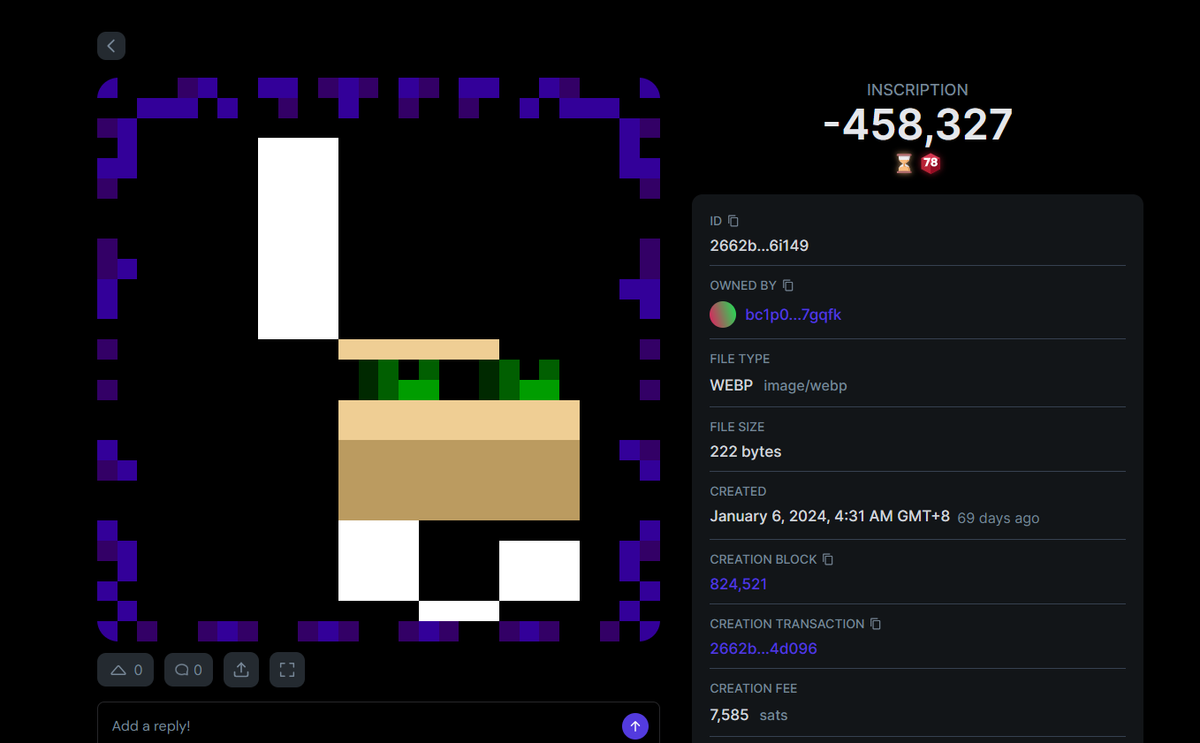
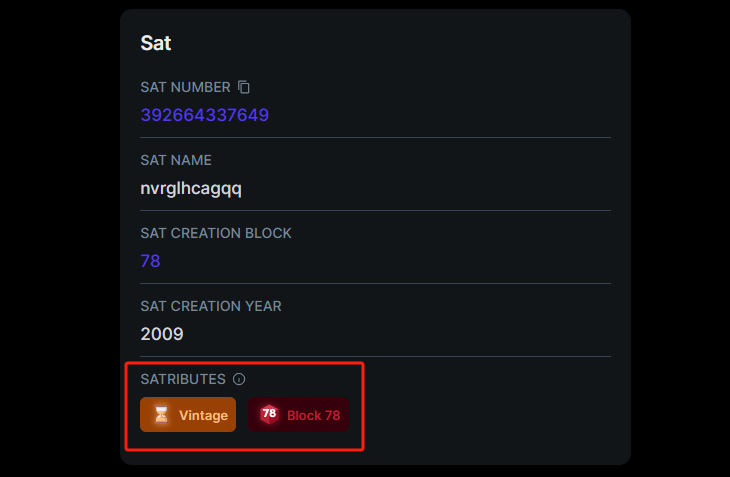
The curse inscriptions are now out of print, and there will be no more curse inscriptions in the world.
After the fix, curse inscriptions will become a special category, with a constant and never-increasing quantity.
Curse inscriptions will become a strong meme narrative in the history of Ordinals.
Compared to most things created by people, there is a greater consensus on a chosen one who came to this world by chance due to a bug.
A collection of original components, paying tribute to NodeMonkes, all using rare Cong and double-sided engravings, 100% engraved on the out-of-print curse inscriptions of BitMonkes.
I'm glad you've made it this far, which means you are a holder who cares about art, not just a speculator in the Web. We call them "coin circle locusts." I hope you can understand the great NFT work we are describing from the perspectives of art and technology.
Now that you have learned about the great achievements of abstract art from pixels to grids in the NFT field, we have also explained the out-of-print curse inscriptions in the article. At the end of the article, we have provided explanations for some terms, such as inscription number, recursive inscriptions, rare Cong, etc. Knowledge will help increase your taste and wealth.
Now I would like to introduce to you a collection that integrates grid art elements, the last 100% curse inscriptions, 100% rare Cong, and uses the recursive protocol, BitMonkes. Remember, this does not constitute any investment advice; the spirit of WEB3 is about sharing.
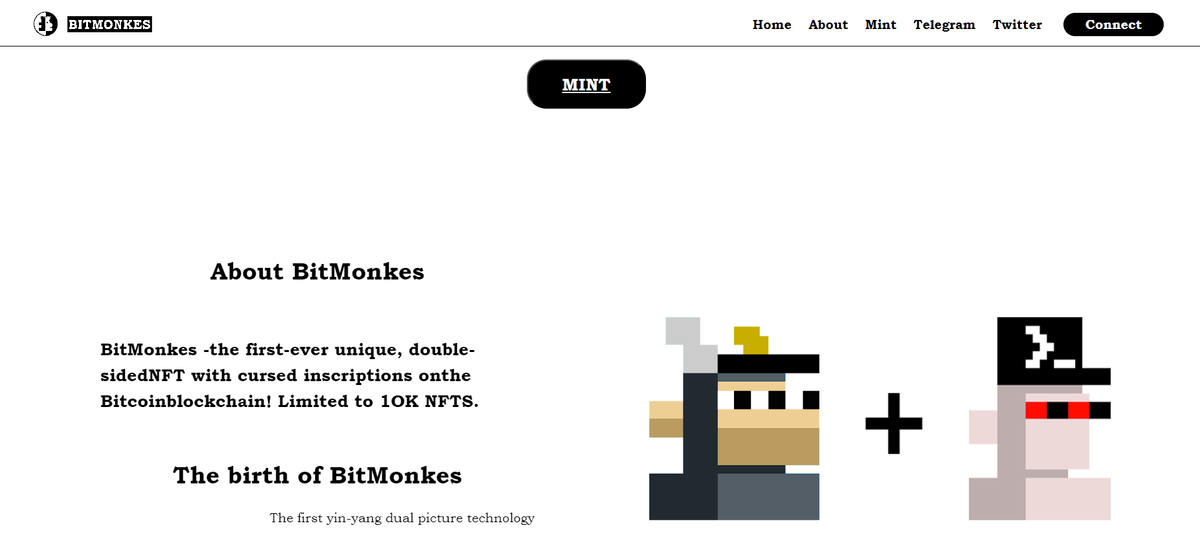
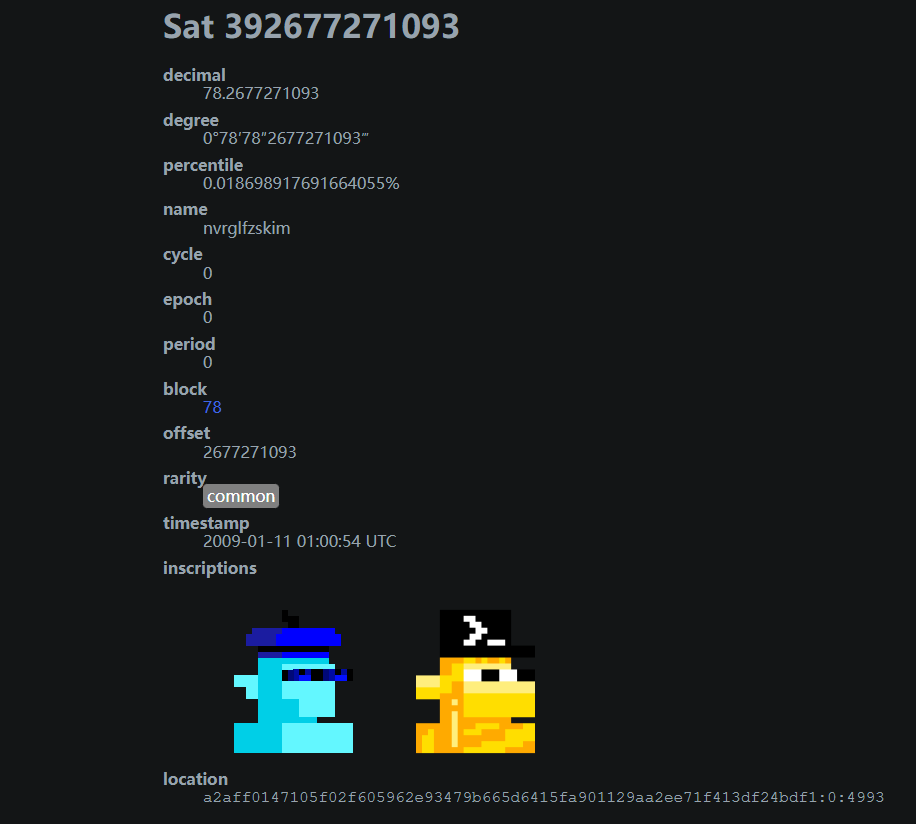
BitMonkes consists of Yin and Yang dual-sided engravings, which are curse inscriptions (Yin) and positive number inscriptions (Yang).
The Yin side displays NodeMonkes, with 150 rare ones with a frame design symbolizing the cursed purple smoke, paying tribute to the 15th anniversary of Bitcoin.
The PFP on the Yang side is an original component using the recursive protocol.
BitMonkes is the only dual-sided engravings in Yin and Yang order.
100% engraved on rare Cong in block78, which was mined by Hal Finney, marking the first time someone other than Satoshi Nakamoto participated in mining. Block 78 also belongs to the range of Vintage rare Cong, with the concept of double rare Cong.
Rare Cong is highly valuable. Apart from the value of the NFT itself, the future sales value of rare Cong is considerable. There are only about 800,000 rare Cong in total, and BitMonkes occupies 10,000 of them.
100% engraved on curse inscriptions, it is the last out-of-print curse inscription collection before the Jubilee upgrade. Curse inscriptions are similar to misprinted stamps and will no longer be added. There are only about 500,000 curse inscriptions, and BitMonkes occupies 10,000 of them.
The last piece of the BitMonkes collection, INSCRIPTION-458,327, was completed at UTC 2024-01-05 20:31, at block height 824521. At that time, there were only 23 blocks, or about 250 minutes, left until the Jubilee upgrade at block height 824544.
The Bitcoin network often experiences blockages, and for a collection of 10,000 pieces, double-sided minting is a very lengthy process. If the engraving is not 100% completed at block height 824521, then it would be an imperfect piece, meaning that some NFTs would be engraved on non-cursed inscriptions. Fortunately, they completed this great feat four hours before block height 824521 and became the final masterpiece.
If we were to describe it in three sets of words, they would be First, Last, Only one.
First: The first dual-sided engravings
Last: The last 10,000 collection before the out-of-print curse
Only one: The only one engraved on curse inscriptions and double rare Cong
If you missed out on NodeMonkes at 0.04 BTC, which is not cheap, from what I understand, the whitelist sale price of BitMonkes is not high. Perhaps the future value of these rare Cong will be more than just a few BTC. I suggest you don't miss out, after all, so many highlights are integrated into one piece of work, and there won't be a second piece like this in the BTC ecosystem. It's worth collecting.
What are inscription numbers, recursive inscriptions, curse inscriptions, and rare Cong?
Inscription numbers:
Each inscription NFT is assigned an inscription number according to the order of engraving (starting from 0 and increasing sequentially). Over time, the current inscription numbers have reached millions, adding to the fun and value judgment of collecting. Generally, people believe that inscription NFTs with lower inscription numbers have greater collection value, such as the sub10k series (the first ten thousand inscriptions).
Recursive inscriptions:
Due to the 4M content limit of taproot segregated witness, which limits the size of inscription content, the inscription protocol has designed a format of mutual reference, called "recursive inscriptions," to break through this limit and introduce greater flexibility. This allows for a richer and higher-definition representation in inscriptions. For example, ordibots 3D uses recursive inscriptions to achieve AR and high definition, and the engraving cost for each inscription NFT is very low.
Curse inscriptions:
Curse inscriptions were originally a protocol bug, where some inscriptions were not "normally" included in the original sequence of numbers. Therefore, these inscriptions were called "cursed" inscriptions and were assigned negative numbers.
These protocol bugs have now been fixed, and there will be no more new curse inscription NFTs with negative numbers in the future. Similar to misprinted banknotes, they are highly speculative, and there are only about 500,000 curse inscription NFTs.
Rare Cong:
Since each inscription NFT is engraved on Cong, for added fun, the inscription protocol defines some special Cong called "rare Cong," such as the first Cong mined in each block. NFTs engraved on these Cong usually have a higher price, and rare Cong is priced higher than regular Cong. There are only about 800,000 rare Cong in total.
In fact, many years ago, "Cong" as the smallest indivisible unit of Bitcoin already existed, i.e., 1 Bitcoin = 10^9 Cong, but it has not entered the mainstream player's field of vision due to its microscale and lack of use cases. However, in the past three months, with the explosion of the Bitcoin ecosystem, Cong, as the carrier of inscriptions, has naturally received a lot of attention. In addition, with its intuitiveness and resistance to volatility, Cong has replaced USDT and firmly established itself as the pricing unit in the Bitcoin ecosystem.
In addition to being a carrier of inscriptions and a pricing unit, Cong itself is naturally suitable for collectible speculation. Of course, to clarify this point, you first need to understand the properties of Cong itself.
Careful observation of the representation of Cong reveals some interesting things. The Cong named 0 and a resonate across time and space, connecting the grand epic of Bitcoin mining, spanning 21 trillion pieces over more than 130 years…
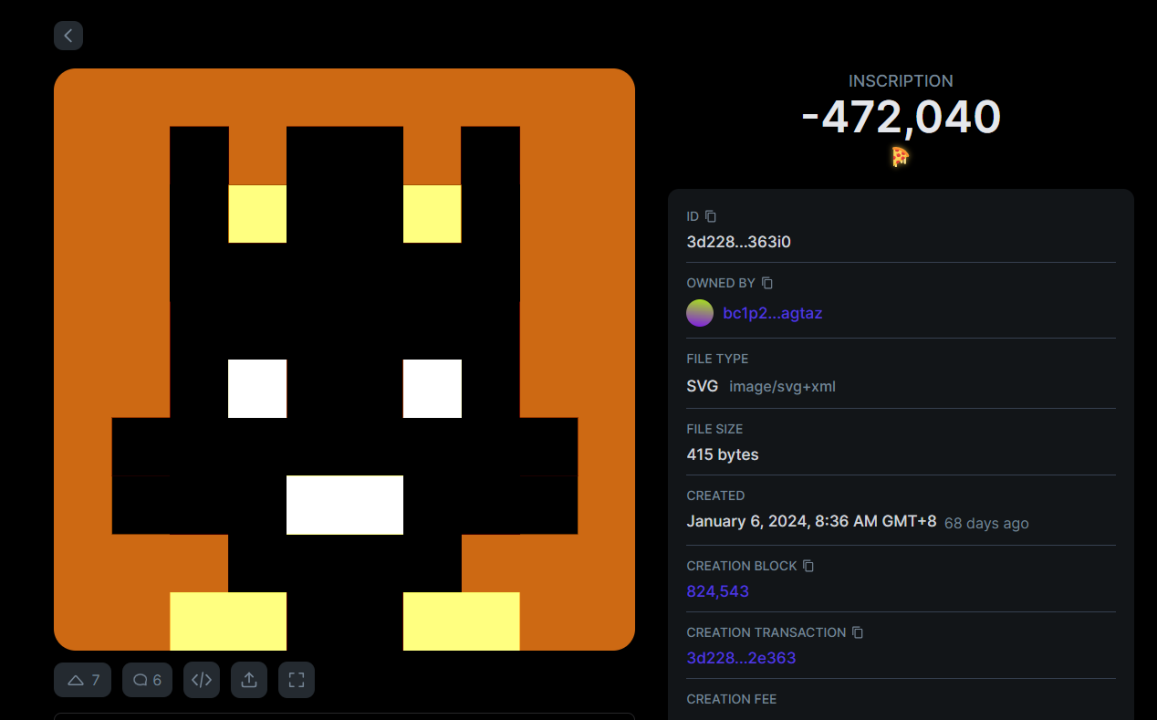
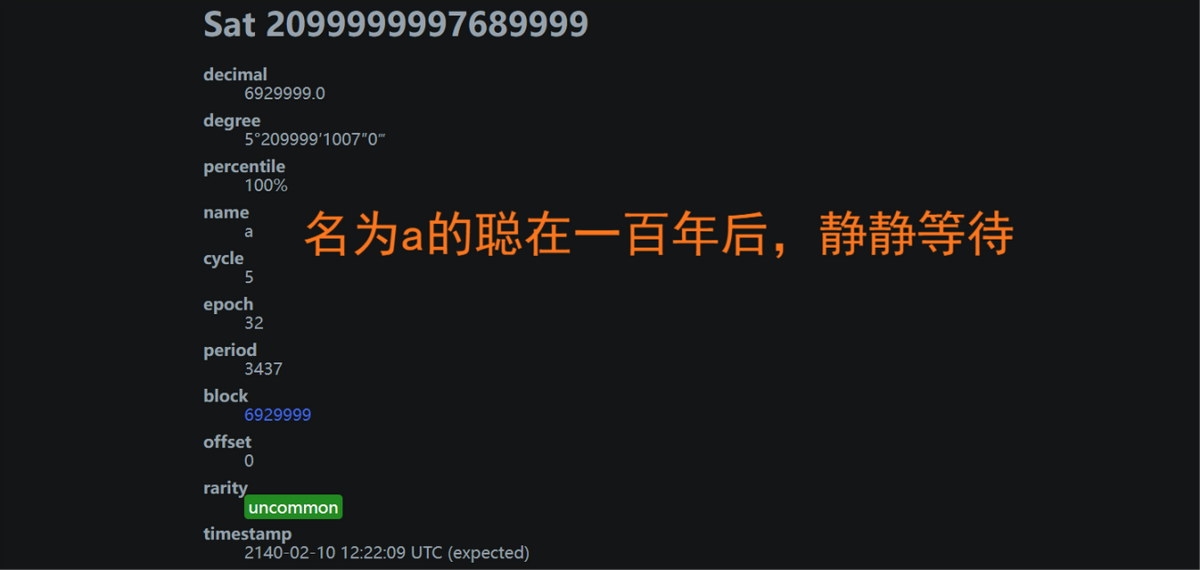
Cong, which plays an important role in these cyclical events, unique-named Cong, and Cong that have experienced historical events, will have different rarity and premiums.
Here is the translated text:
To give a vivid example, Cong is like a 100 RMB bill in circulation, and its purchasing power does not change due to printing batches or the number of times it changes hands. However, due to the appearance of serial numbers, a small number of banknotes with special numbers have generated a premium. Cong is the same way. Based on certain consensus criteria, a small number of Cong with special properties have generated incredibly high premiums in the market. In contrast, the mainstream consensus criteria for Cong are much stricter than the "leopard number" of RMB serial numbers.
Based on the four basic events combinations covered by the decimal notation, the six levels of rarity of Cong can be clearly defined as Common, Uncommon, Rare, Epic, Legendary, Mythical.

On May 23, 2022, the inscription with the serial number 8669069 made a grand appearance, sparking discussions in the Ordinals community and the rare Cong community. It attracted attention because it was the first inscription engraved on a rare level Cong. Currently, out of 19 trillion Cong, there are only 370 rare level Cong, making this inscription likely to become the most expensive crypto artwork in history. Additionally, the inclusion of "The Times 03/Jan/2009 Chancellor on brink of second bailout for banks." in the image, which was engraved by Satoshi Nakamoto in the genesis block, gives it unparalleled significance. In the world of art, the stacking of rarity often has a 1+1>>>2 effect.
You can easily find explanations for these categories on the ord.io market.
Uncommon
The first Cong of each block
Rare
The first Cong of each block
Epic
The first halved Cong
Vintage
Mined from the first 1000 blocks
Nakamoto
Cong mined by Satoshi Nakamoto, interestingly named
First Transaction
The first transaction, on January 12, 2009, Satoshi Nakamoto sent 10 bitcoins to Hal Finney, the first on-chain interaction in history.
Palindrome
A number that reads the same forwards and backwards, such as 12921
Pizza
The Cong used in the transaction to purchase pizza with 10,000 bitcoins, which is also the origin of the nickname "Bitcoin Pizza Day," occurring on May 22, 2010, and celebrated as Pizza Day since then.
Block 9
The oldest Cong currently in circulation, unless it belongs to an address associated with Satoshi Nakamoto.
Block 78
Cong mined by Hal Finney, the first person other than Satoshi Nakamoto to participate in mining. Block 78 also belongs to the range of Vintage rare Cong, with the concept of double rare Cong.
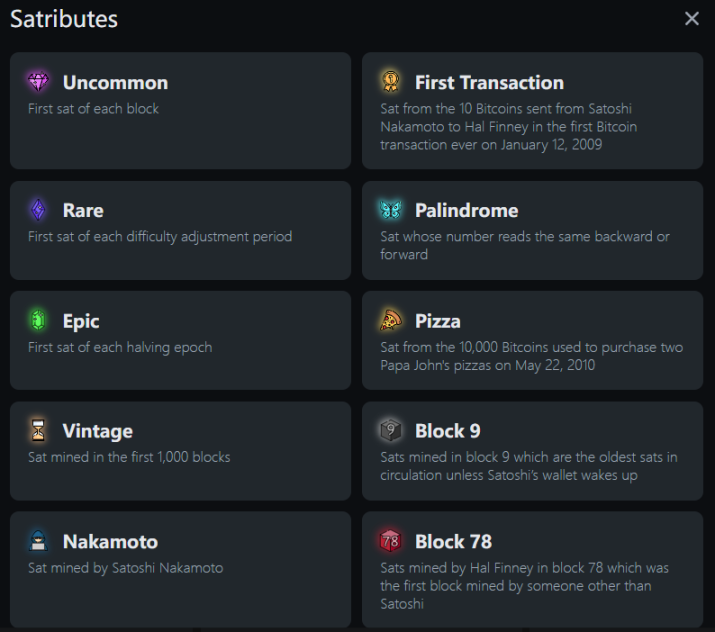
In conclusion: Some excerpts in this article about pixel NFTs are quoted from AIO News, and I would like to express my gratitude. I entered the world of Bitcoin in 2013, and time flies. It has been 11 years. I am fortunate to live in this great era and pay tribute to Satoshi Nakamoto.
免责声明:本文章仅代表作者个人观点,不代表本平台的立场和观点。本文章仅供信息分享,不构成对任何人的任何投资建议。用户与作者之间的任何争议,与本平台无关。如网页中刊载的文章或图片涉及侵权,请提供相关的权利证明和身份证明发送邮件到support@aicoin.com,本平台相关工作人员将会进行核查。




